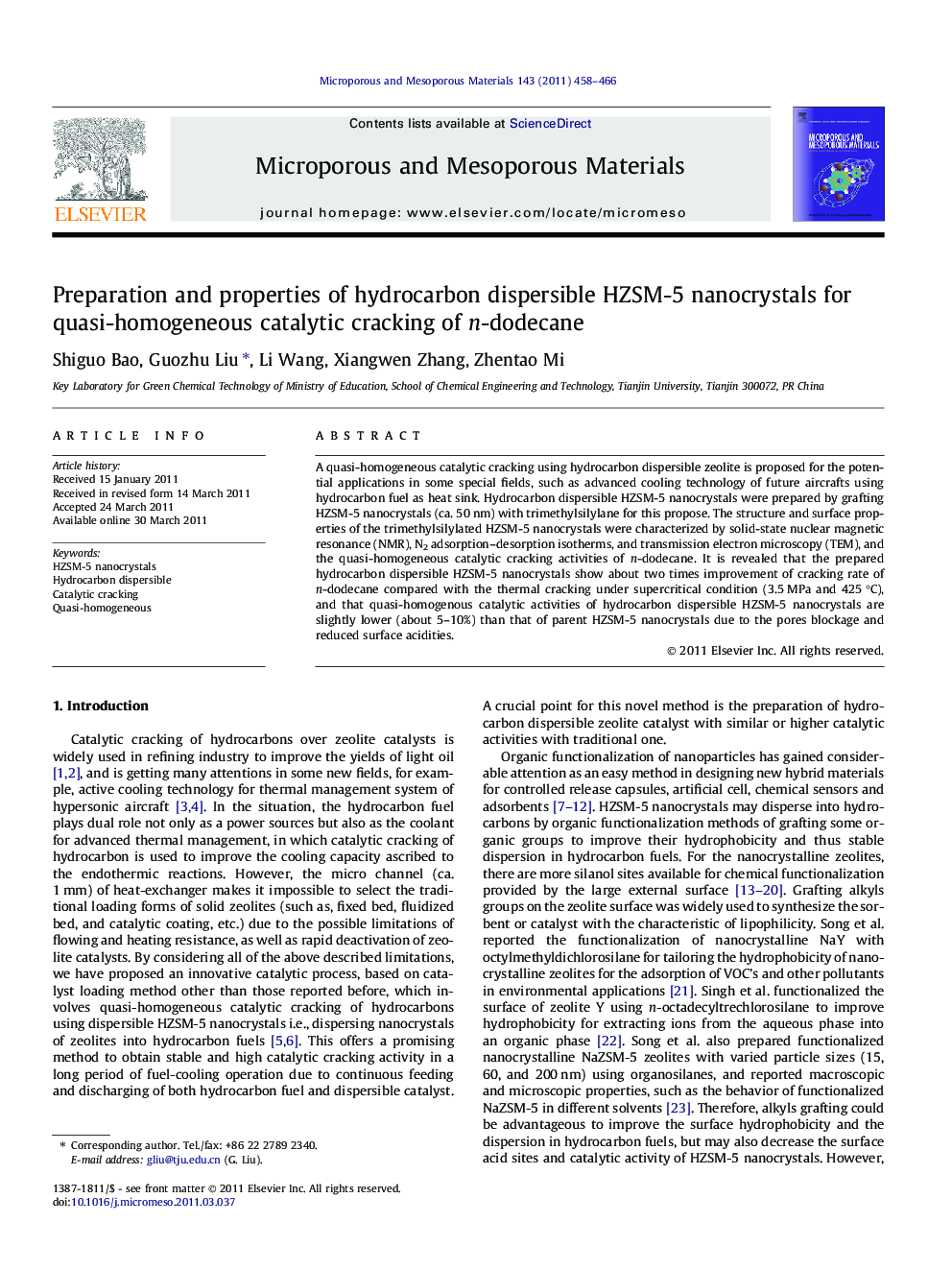| کد مقاله | کد نشریه | سال انتشار | مقاله انگلیسی | نسخه تمام متن |
|---|---|---|---|---|
| 74421 | 49090 | 2011 | 9 صفحه PDF | دانلود رایگان |

A quasi-homogeneous catalytic cracking using hydrocarbon dispersible zeolite is proposed for the potential applications in some special fields, such as advanced cooling technology of future aircrafts using hydrocarbon fuel as heat sink. Hydrocarbon dispersible HZSM-5 nanocrystals were prepared by grafting HZSM-5 nanocrystals (ca. 50 nm) with trimethylsilylane for this propose. The structure and surface properties of the trimethylsilylated HZSM-5 nanocrystals were characterized by solid-state nuclear magnetic resonance (NMR), N2 adsorption–desorption isotherms, and transmission electron microscopy (TEM), and the quasi-homogeneous catalytic cracking activities of n-dodecane. It is revealed that the prepared hydrocarbon dispersible HZSM-5 nanocrystals show about two times improvement of cracking rate of n-dodecane compared with the thermal cracking under supercritical condition (3.5 MPa and 425 °C), and that quasi-homogenous catalytic activities of hydrocarbon dispersible HZSM-5 nanocrystals are slightly lower (about 5–10%) than that of parent HZSM-5 nanocrystals due to the pores blockage and reduced surface acidities.
Quasi-homogenous catalytic cracking of n-dodecane using hydrocarbon dispersible HZSM-5 nanocrystals improves cracking rate by 1 times compared to thermal cracking.Figure optionsDownload as PowerPoint slideHighlights
► Hydrocarbon dispersible HZSM-5 nanocrystals are prepared by grafting with trimethylchlorosilane.
► Trimethylsilylated HZSM-5 nanocrystals can stably dispersed in hydrocarbons.
► Hydrocarbon dispersible HZSM-5 nanocrystals improves cracking rate by about 1 times compared to thermal cracking.
Journal: Microporous and Mesoporous Materials - Volume 143, Issues 2–3, September 2011, Pages 458–466